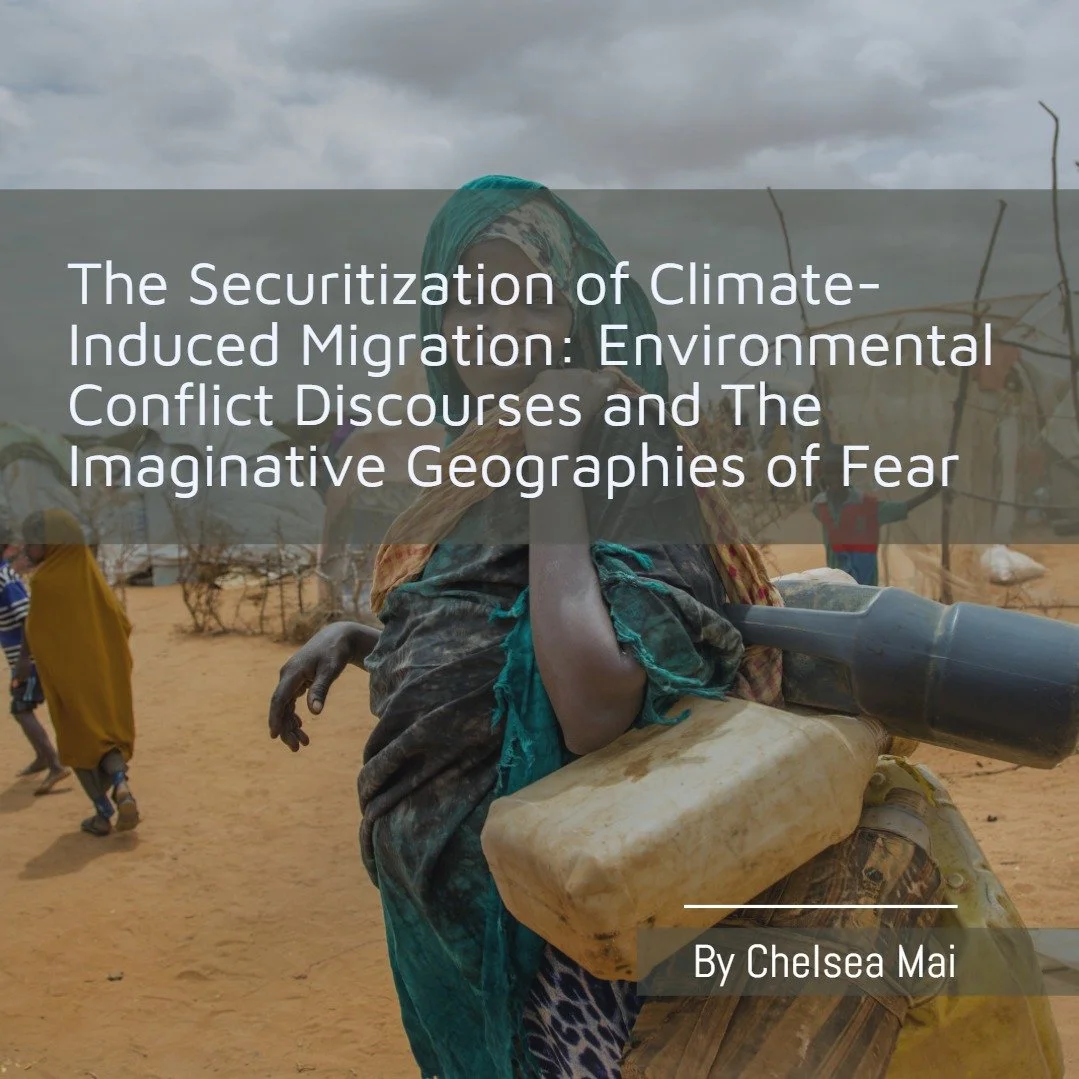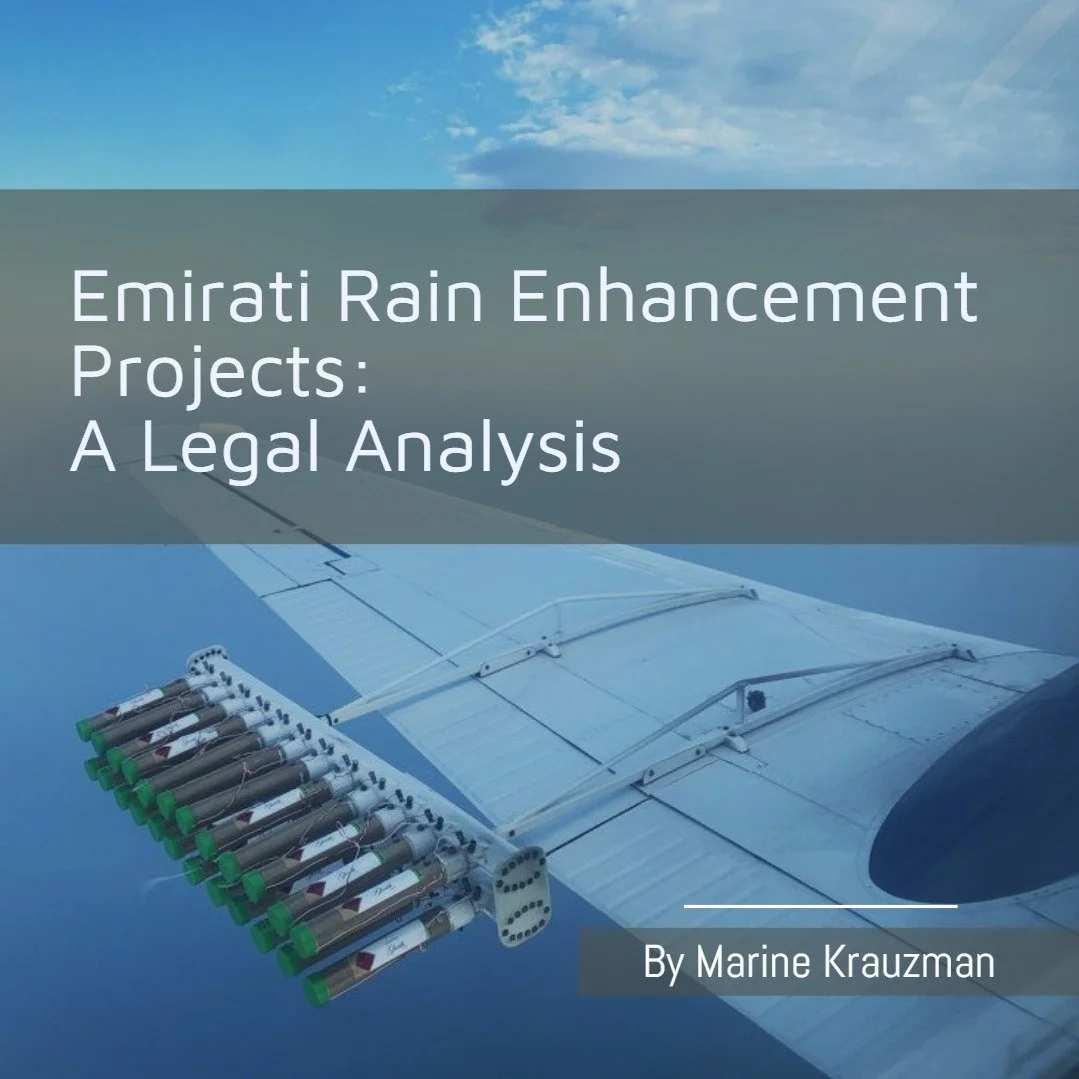ABSTRACT
The UN Framework Convention on Climate Change, signed in 1992, marked a milestone when climate change concerns were raised globally, and the UN became a powerful speech actor securitizing climate change. In 2007, the UNSC debate on the international security implications of climate change focused on the threat of climate-related conflicts [1][2]. However, military and political institutions constantly frame climate change as a threat to national security and a priority for foreign policy [3] as well as a catalyst for future conflicts [4]. These narratives of danger are caused by the securitization of the environment had shaped policies, favouring technocratic solutions and development interventions in so-called climate hotspots.
BY NADIRA MUKHAMEJAN
CLIMATE CHANGE DISCOURSE AS A PROBLEM DISPLACEMENT: THE CASE OF KYRGYZSTAN
Climate-induced changes were linked to the increased likelihood of migration [5] and resource scarcity, [6] resulting in conflicts because of growing population density and competition for resources. The causal link between natural resources, environmental degradation, and violent conflict appears compelling at first sight: population growth increases the scarcity of natural resources and makes societies prone to violence. Nevertheless, this assumption tends to ignore the context factors and assumes localized human helplessness [7][8].
Several scholars stress that, within environmental insecurity, resource abundance, especially when it comes to vital resources, such as water, can also cause grievances and result in conflicts and potential ‘water wars’ [9]. However, first, the practice shows that states do not necessarily engage in conflicts over water [10], second, scarcity is not necessarily a natural condition, but a social construct/product derived from localized cultural, political, or historical contexts [11].
As Smith writes, ‘nowhere in the world is the potential for conflict over the use of natural resources as strong as in Central Asia [12]: the climate projections in Central Asia demonstrates the average temperature will increase by up to 6.5°C by 2100, which will result in changing precipitation patterns, more frequent heat extremes, and increasing aridity [13]. It will also increase temperature effects on the snow and ice cover in the Tien Shan mountains in Kyrgyzstan, the most endangered country in the region, with knock-on effects, such as flooding and landslides in the downstream area, which would threaten the livelihoods of the population [14].
However, the established discourse of the danger of environmental conflict led to linking the episodes of violence to the competition over natural resources, which results in a problem displacement. For instance, the clashes between Tajik and Kyrgyz populations in Batken in April 2021, which led to about 50 casualties and 300 injured [15], was also framed as a clash over land and water because of the impact of climate change [16]. However, we must look closer at the process of territorialization throughout the Soviet era. In fact, it was the political and administrative calculus of territorialisation and bordering which caused the situation. Wherein nationality was associated with modes of production (Tajik agriculture versus Kyrgyz animal husbandry) and lifestyles (Tajik sedentary versus Kyrgyz nomadic), this played a role in identity creation and establishing moral authority for territorial claims [17]. Disputes between residents date back to the Soviet period, these conflicts far preceded global consciousness of climate change, with the first violent clashes reported in the 1930s, and have continued since. Media and international aid agencies’ conceptualization of these conflicts as conflicts over scarce resources neglects political contexts and historical circumstances that are at the root of these conflicts [Ibid., p. 126]. Aid programs dedicated to climate change mitigation frame the environment as a ‘problem to fix’ which proposes technocratic mitigation and adaptation solutions, embodied in the tunnel vision of ‘seeing like a project’ [18].
CONCLUSION
Whereas it is undeniable that water scarcity will be affected by climate change which can, in turn, cause competing justifications for water use among different communities, we should also consider the role of state territorialisation and the construction of collective identities. Since there are social deprivations and inequalities already in place, the climatic factor is only one of many factors causing community vulnerability [19]. Accordingly, it would be more productive to perceive conflicts as a social process rather than a causal relationship between scarcity and violence. Priorities of funding agencies based upon a distorted perception of potential climate conflicts, unaligned with local needs, lead to fragmented and unsustainable results, as has happened in the framing of the conflict in Batken.
This power of global normative climate concepts is not unique to Central Asia. International actors have been engaged with water and ecological issues in Kyrgyzstan and other countries in the Global South for many years, and they plan to continue this work for the coming years. The government’s actions and donor interventions would benefit more from advanced research on climate-water interactions and careful consideration of ethnographic studies and socio-spatial narratives.
REFERENCES
[1] United Nations Security Council (2007). 5663rd meeting, Tuesday, 17 April 2007, 10 a.m. New York, S/PV.5663.
[2] Detraz, N. and Betsill, M. M. (2009). “Climate Change and Environmental Security: For Whom the Discourse Shifts”, International Studies Perspectives, vol. 10, no. 3, pp. 303–320.
[3] Campbell K. M. et al. (2007). The age of consequences: the foreign policy and national security implications of global climate change. Center for Strategic and International Studies. Center for a New American Security, Washington, DC.
[4] CNA Corporation, Center for Naval Analyses, (2007). National Security and the Threat of Climate Change, Alexandria, Virginia.
[5] Dalby, S. (2002), Environmental security, University of Minnesota Press, Minneapolis, London.
[6] Smith, D. and Vivenkananda, J., (2007), “A Climate of Conflict: The Links Between Climate Change, Peace and War”, International Alert, London.
[7] Bigo, D. (2002) ‘Security and Immigration: Toward a Critique of the Governmentality of Unease’, Alternatives, 27(1_suppl), pp. 63–92.
[8] Harries T. (2008). “Feeling secure or being secure? Why it can seem better not to protect yourself against a natural hazard” Health, Risk & Society, vol. 10, no. 5, pp. 479-490.
[9] Fairhead, J. (2000). “The Conflict over Natural and Environmental Resources” in Wayne Nafziger; Frances Stewart and Raimo Väyrynen (Eds.): The Origins of Humanitarian Emergencies: War and Displacement in Developing Countries, Oxford University Press, Oxford, pp.147-178.
[10] Schillinger J., Özerol G., Güven‐Griemert Ş., Heldeweg M. (2020) Water in war: Understanding the impacts of armed conflict on water resources and their management. WIREs Water. 7:e1480.
[11] Hartmann, B. (2010), "Rethinking climate refugees and climate conflict: Rhetoric, reality and the politics of policy discourse", Journal of international development, vol. 22, no. 2, pp. 233-246.
[12] Smith, D. (1995), "Environmental Security and Shared Water Resources in Post-Soviet Central Asia" Post Soviet Geography, vol. 36, no. 6, pp. 351-370.
[13] World Bank, (2018). Kyrgyz Republic, From Vulnerability to Prosperity, A Systematic Country Diagnostic.
[14] Bernauer, T. and Siegfried, T., (2012), ‘Climate change and international water conflict in Central Asia’, Journal of Peace Research, 49(1), pp. 227–239. doi: 10.1177/0022343311425843.
[15] Kalykov, М., (2021). Конфликт на границе: 36 кыргызстанцев погибли, 189 пострадали. [online] KLOOP.KG - Новости Кыргызстана. Available at: <https://kloop.kg/blog/2021/04/29/konflikt-na-granitse-36-kyrgyzstantsev-pogibli-189-postradali/> [Accessed 28 November 2021]
[16] Glas, O., (2021). Wasserkonflikt in Zentralasien: Streit um versiegende Quellen. [online] FAZ.NET. Available at: <https://www.faz.net/aktuell/politik/ausland/warum-kirgistan-und-tadschikistan-um-wasser-kaempfen-17330904.html> [Accessed 28 November 2021].
[17] Bichsel, C. (2009). Conflict transformation in Central Asia: Irrigation disputes in the Ferghana Valley. London: Routledge, p. 107-111
[18] Li, T.M. (2007), “The Will to Improve: Governmentality, Development, and the Practice of Politics”, Durham: Duke University Press, p. 7.
[19] Mogilevskii R, Abdrazakova N, Bolotbekova A, Chalbasova S, Dzhumaeva S, Tilekeyev K. (2017), “The outcomes of 25 years of agricultural reforms in Kyrgyzstan”, Discussion Paper No. 162, Leibniz Institute of Agricultural Development in Transition Economies (IAMO), Halle/Saale, Germany.









